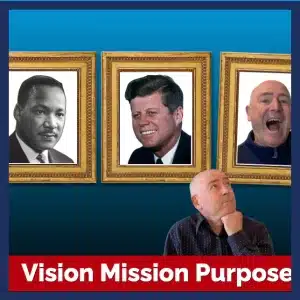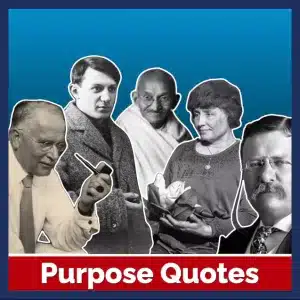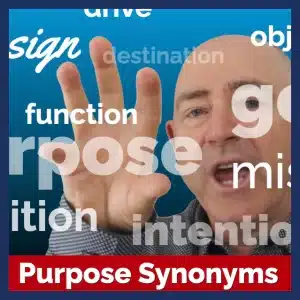Generally, manifestos have not been widely used in the corporate world. And, as part of my mission to change this, I want to showcase some powerful examples of corporates doing it well. And, the best place to start is with one of the most profitable companies on the planet: Apple.
In my eyes, the Apple Manifesto is made up of four major manifestoes over the lifetime of the company. And, they were all presented as a series of advertisements. Generally they highlight different aspects of the nine Manifesto Manifesto principles. Which one of the Apple Manifestos is your favourite?
[Tweet “The Apple Manifesto – the four major campaigns – which one is your favourite? #manifesto #apple”]
Big Brother
The famous 1984 ‘Big Brother’ advertisement positioned Apple as the one who stood up against IBM, PCs and Big Brother. It’s a classic example of ‘us’ versus ‘them’ positioning. This fits with Manifesto Manifesto Principles #5 and #6: Define Us and Antagonise Others.
In 1984, Apple was a tiny player in the computer industry and was about to launch the first Apple Macintosh. At the time IBM PCs dominated the market and Steve Jobs resolve was “to offer IBM a run for its money.” (Wikipedia) This ad is deliberately confrontational to attract attention and it positioned Apple as the underdog for many years to come.
TIP: One of the most powerful ways to ‘define us’ is to define the enemy and confront them. Who is your market enemy? It might be a person, a company or an attitude.
We Are the Crazy Ones
This fabulous ad showcased their Think Different campaign, which aligned Apple with creative geniuses such as Pablo Picasso, Frank Lloyd Wright, Albert Einstein, Martha Graham and Jim Henson. It reframes ‘different’ into ‘innovation’. And, indirectly Apple as the tool of choice for making change happen.
This is a classic example of the Manifesto Manifesto Principle #3: Manifestos create new worlds. In my view, it is easily the best of the Apple four because it works powerfully both internally to inspire Apple staff and externally to inspire users.
I can imagine Jony Ive in the past running into Steve Job’s office with the latest Mac device and Steve turning to his computer and playing this video to remind them of the benchmark they had set for themselves: Will this push the human race forward?
Equally, I find it personally inspiring to continue on my path to ‘think different’ and create change.
TIP: Did you notice there is not a single computer or Apple product mentioned in this ad? This is the power of the ideal that drives your brand, your business and your manifesto. What is your brand ideal? What is the future world you want to create?
I’m a Mac
This funny, witty and prolific set of ads was a direct poke in the ribs to PC users. It was part of the ‘Get a Mac’ campaign that included more than 60 ads. As you might expect, the already converted faithful Mac users loved these ads. Whereas, those PC users over on the dark side generally hated them.
The obvious ‘us’ versus ‘them’ theme follows the path of the 1984 manifesto in a less confrontational way. These ads are cheeky and playful. Rather than create division they were aimed at the swinging user who may have bought an iPod and was yet to buy an Apple computer. The goal here was to unite the community (Manifesto Principle #4).
https://www.youtube.com/watch?v=DZSBWbnmGrE
Above is the complete set of Apple Ads (37 minutes). Alternatively, here’s a selection of the Ten Funniest I’m A Mac Ads (5 min).
In this case the message is particularly strong because the ‘enemy’ is clearly defined: Microsoft. And, whilst the content of the ads talks about the features of the competing products, the real contrast is the comparison of people and identity through some clever caricatures. This is one of the big reasons the PC users typically hated these ads – they were portrayed as an overweight and super uncool, conservatively dressed version of Microsoft founder Bill Gates. And, Bill Gates was not cool to begin with. In contrast, the Apple ‘person’ was represented by a young Steve Jobs lookalike who is casually dressed, hip and very relaxed.
This was clearly a successful campaign for Apple simply based on the number of ads they produced. It also provoked a fatal response from Microsoft with their ‘I’m a PC’ campaign. Rule number one in framing is not to compete with the same frame. And, in this case Microsoft’s efforts merely brought more attention to the Apple ads.
TIP: To build your community make an appeal to the identity of your intended audience. Who do you want in your community? Create an ideal avatar of the qualities of the people you want in your tribe.
Designed by Apple
This ad was produced two years after the death of founder and spiritual leader Steve Jobs. It aims to reinforce the view that Apple will continue to create high quality products.
Whilst it is a classic example of Manifesto Manifesto principle #5 Define Us, I think it is more important as a subtle example of Principle #2: Terminate the past. The aim of this campaign is mark the end of an era and position Apple in the Post Steve Jobs Era. The full title ‘Designed by Apple in California’ positions the company in two ways:
- We are a design company. Full stop. In earlier days Apple used the full title of Apple Computer. This was shortened in 2007 (Wikipedia) to reflect a shift to consumer electronics. Apple had consistently outsourced the manufacture of its products for many years and this campaign emphasized the full shift to design as the core activity of the business.
- We are a design company that goes beyond Steve Job. This manifesto aims to fill the void after the death of Steve Jobs. It acknowledges the passing of the baton from ‘designed by Steve’ to ‘designed by Apple’. This has more to do with the public perception of Apple than any shift in internal workings. In the early years, Jobs was the dominant design force in the company. And, in recent years this had diminished significantly with a strong team being lead by Jony Ive doing the designing. This ad reassures the market that Apple will continue to produce great things without Steve Jobs.
In my view, this is the weakest of the four manifestos because it’s all about Apple. Whilst it attempts to replicate the success of the ‘We Are the Crazy Ones’ campaign in content and style, there is very little in this manifesto for the fan. It simply reinforces that Apple will continue to create high quality products. This is ‘nice’ and almost meaningless because if they don’t the fans are leaving anyway. It’s a rhetorical statement that doesn’t need to be said.
TIP: This manifesto marks a significant shift in identity for Apple in a world with no Steve Jobs. Do you need to mark a shift in your identity by declaring a new manifesto?
COMMENT: Which one of these four Apple Manifesto is your favourite? Why?



